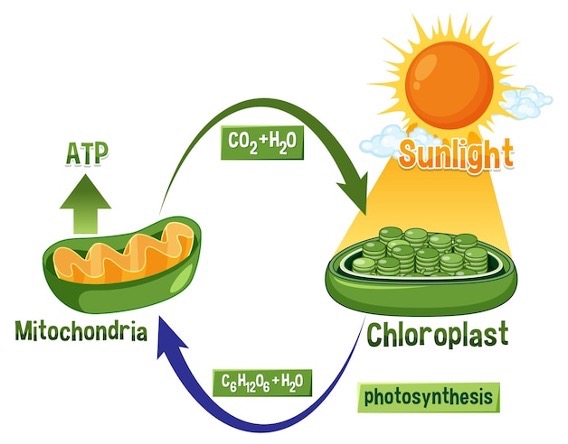Fuels
Fuels are substances with stored energy, which is essentially the capacity to do work, that can be released easily for use as heat or power. When talking about fuels, we can classify them as either being from renewable energy sources, or from non-renewable sources. Fuels sourced from renewable energy sources can be replaced at a rate that is as fast, or faster than the rate of its consumption - this is largely due to biological mechanisms e.g. decomposition. Fuels sourced from non-renewable sources are finite and are consumed at a rate faster than they are produced.
Fossil fuels are a source of non-renewable energy produced from the incomplete decay of animal and plant material. They take millions of years to form and are not readily replenished, and hence, their supply is finite.
Formation of Coal
Combustion of Coal:
Overtime, the concentration of water in coal decreases. Therefore, when the coal is burned, higher quality coal expends less energy on vaporising water, increasing the net amount of heat released
Crude oil is a mixture of hydrocarbons that are members of the homologous series of alkanes. The hydrocarbons are separated into a range of fractions through the process of fractional distillation. Each fraction is made up of a range of hydrocarbons with similar boiling points and hence molecular masses. Those which have a lower molar mass are found towards the top of the tower.
Natural gas is an important source of alkanes of low molecular mass generally found in gas reservoirs. It is mainly composed of \(CH_4\) together with small amounts of other hydrocarbons (C2-C4). When natural gas is adsorbed to the surface of coal in coal deposits, it is known as coal seam gas. When it is trapped inside shale rock, it is known as shale gas.
Fracking is the process in which natural gas from coal or shale deposits is extracted. The process begins with the drilling of a well into the deposit, where fracking fluid is pumped down at high pressures fracturing the rock and creating fissures through which the gas can flow through.
Biofuels are a renewable energy source and are derived from biological materials such as animal waste and plant materials such as grains, sugar cane or vegetable waste.
Bioethanol uses the processes of hydrolysis and fermentation. Hydrolysis is used to break down starch into glucose, which is subsequently used in fermentation by yeasts which convert it into carbon dioxide and ethanol. Occasionally, bioethanol is referred to as being carbon neutral, that is, there is no net production of CO2 as it is consumed through photosynthesis ‘neutralising’ the quantity released during combustion. However, it is not actually carbon neutral because carbon dioxide is produced in the growing, transport and refining of the fuel.
Biogas is released in the breakdown of organic waste by anerobic bacteria. These bacteria decompose the complex molecules in carbohydrates and proteins into molecules such as carbon dioxide and methane.
Biodiesel is produced through transesterification when triglycerides or lipids react with an alcohol, usually methanol. A base, such as KOH or NaOH acts as the catalyst, producing glycerol and three ester molecules. Once the reaction is complete, the biodiesel can be separated from the glycerol by removing the glycerol from the bottom, as it is denser. Biodiesel can be manufactured using oils from crops such as canola oil, soybean oil or from animal fats.
Triglyceride + Methanol → Glycerol + Fatty Acid Methyl Esters

Transesterification
The viscosity of biodiesel is higher than petrodiesel, hence it doesn’t flow as easily along fuel lines and through filters. Petrodiesel also has a lower cloud point than biodiesel, and therefore it can withstand colder climates without crystallising. The only forces present within petrodiesel are weak dispersion forces as it is composed of nonpolar molecules. Whereas, in biodiesel, the hydrocarbon chain is often longer, each containing two electronegative oxygen atoms. These create dipoles, resulting in dipole-dipole bonds, causing the viscosity and melting point to be greater than petrodiesel. The polar bonding within biodiesel causes it to be more hygroscopic (the ability to absorb moisture from the air) than petrodiesel as it has a higher affinity for water. Furthermore, biodiesel is more prone to reaction with atmospheric oxygen and biodegradation as a result of the affinity of the fuel with water, hence it cannot be stored for as long as petrodiesel.

Petrodiesel and Biodiesel
| Petrodiesel | Biodiesel | |
| Environment | Mining of Crude Oil, \(SO_2\) Emissions | Food for Fuel |
| \(CO_2\) | \(73g\,MJ^{-1}\) | Photosynthesis \(\rightleftharpoons\) Combustion |
Carbon dioxide is a greenhouse gas produced via combustion, which contributes to the greenhouse effect – the natural phenomenon that maintains the Earth at a certain temperature. However, by increasing the concentration of greenhouse gases in the environment, this can lead to the increase in temperatures and changes in climate. Other gases such as \(SO_2\), \(NO\), \(NO_2\) and \(O_3\) can lead to respiratory problems and the formation of acid rain.
Photosynthesis is a process that occurs in the chloroplast of plants in which the sun’s energy is used to convert carbon dioxide and water into glucose and oxygen.

Cellular respiration is a process which produces a useable form of energy called ATP (adenosine triphosphate) in living things.
Two types: